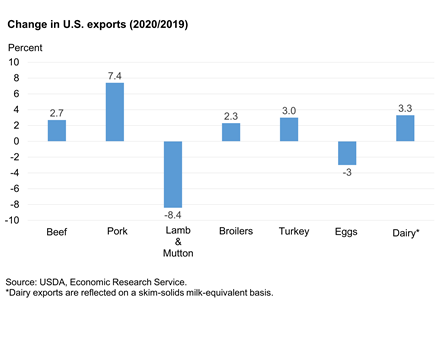

U.S. exports of red meat and poultry are expected to increase by more than 4 percent in 2020. Beef exports are forecast to increase 2.7 percent, largely due to lower anticipated competition in Asian markets, as beef supplies in Oceania will reflect weather-related herd reduction this year. Pork exports are expected to increase more than 7 percent next year as Mexican demand for U.S. pork is reestablished following the removal of tariffs in mid-May, 2019. Broiler export growth is forecast at 2.3 percent based on expectations of increased demand in low- and middle-income countries, particularly as the global meat and poultry market is pressured by shifting Chinese demand. Growth of 3 percent is anticipated for turkey exports next year, supported by strength in shipments to Mexico—the largest buyer of U.S. turkey meat—with continued low turkey prices expected to draw additional international buying interest. Lamb and mutton exports are likely to fall as U.S. production trends lower. Export volumes for eggs and egg products are forecast to decrease by 3 percent, based on expectations of continued softness in foreign demand. Dairy exports are expected to grow 3.3 percent next year as global demand for dairy products grows.
Click here to see more...